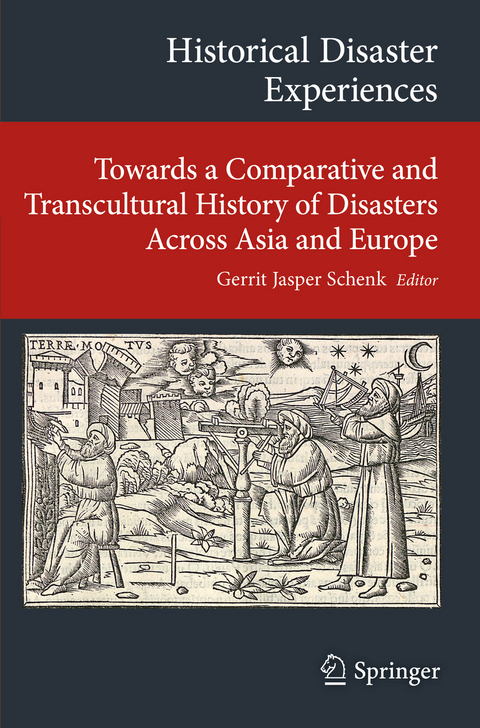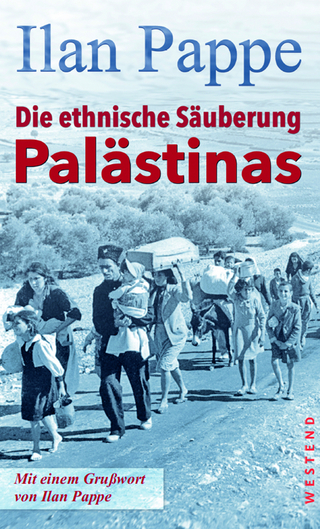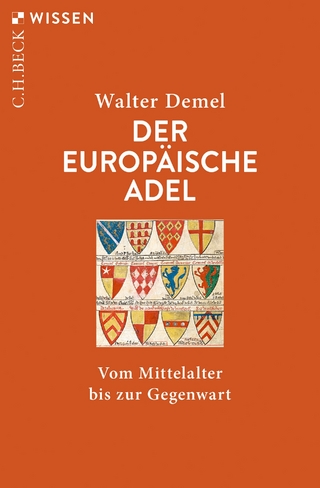
Historical Disaster Experiences
Springer International Publishing (Verlag)
978-3-319-49162-2 (ISBN)
Gerrit Jasper Schenk (Dr. phil.) is professor of medieval history at Technische Universität Darmstadt (Germany). He has taught at the universities of Heidelberg, Stuttgart and Essen and has held fellowships from the Gerda Henkel Foundation and the German Historical Institutes (Rome, Paris). He is an associated member of the Cluster of Excellence "Asia and Europe in a Global Context" (University of Heidelberg). His main research interests are rituals, ceremonies, pilgrimage, environmental history, historical disaster research and urban history. Most recently he has coedited books on Historical Disasters in Context (2012), Krisengeschichte(n) (2013), Disaster as Image (2014) and Mensch. Natur. Katastrophe. Von Atlantis bis heute (2014).
Part I: State of Research, Concepts and Methods.- Historical Disaster Experiences: First Steps towards a Comparative and Transcultural History of Disasters across Asia and Europe in the Pre-industrial Era.- Living with Hazard: Disaster Subcultures, Disaster Cultures and Risk-Mitigating Strategies.- Part II: Materiality of Disasters: Natural Impact, Social Experience.- Several Natural Disasters in the Middle East (at the Beginning of the Eleventh Century) and their Consequences.- Fana and Fasad: Perceptions and Concepts of Crises and Disasters in Fourteenth-century Egypt.- The Black Death and Human Impact on the Environment.- The day the sun turned blue. A volcanic eruption in the early 1460s and its possible climatic impact - a natural disaster perceived globally in the late Middle Ages?.- Cultural Implications of Natural Disasters: Historical Reports of the Volcano Eruption of July, 1256 A.D.- When Europe was burning. The multi-seasonal mega-drought of 1540 and the arsonist paranoia.- Part III: Heaven and Earth: Searching for Reasons.- Assur will suffer: Predicting disaster in Ancient Egypt.- 'Natural' Disasters in the Arabic Astro-meteorological Malhama Handbooks.- Tracing the Will of the Stars: Indian Astrology and Divination about Natural Disasters and Threats.- Explaining the Bihar Earthquake of 1934: The Role of Science, Astrology and 'Rumours'.- Part IV: Urban Experience: Earthquakes and Fire.- The 1173/1759 Earthquake in Damascus and the Continuation of Architectural Tradition.- Living with Disaster: Aleppo and the Earthquake of 1822.- 'The Great Fire in Cairo of 1321' - Interactions between Nature and Society.- Perceiving Urban Fire Regimes in Europe and China, 1830s to 1870s: British Fire Insurance Businesses and the Sudden Challenge of Globalisation.- Part V: Frequent Experience and Adaptations: Floods and Landscapes of Defence.- Economic adaptation to risky environment in the late Middle Ages. The case of the 'accrues' of the Doubs in Chaussin(Jura, France) from c. 1370 to c. 1500.- Measuring 'disaster'? The 'everydayness' of fluvial landscapes and the colonial state in Gangetic diaras, 1790s-1880s.- When the 'Deluge' Happened: The Flood of 1929 in the Surma-Barak Valley of Colonial Assam.- Alpine landscapes of defence - On modern-vernacular avalanche protection systems in the Swiss Alps.
"This collection of 20 essays covers a variety of disasters ... across a wide expanse of space and time, ranging from the 11th-century Middle East to 16th-century Europe and 20th-century India and Nepal. ... The essays are generally of high quality, and several are excellent. Editor Schenk offers a useful introductory overview of the development of historical interest in disasters and key questions that have shaped the field in recent decades ... . Summing Up: Recommended, Graduate and research libraries." (M. Mulcahy, Choice, Vol. 55 (3), November, 2017)
| Erscheinungsdatum | 02.04.2017 |
|---|---|
| Reihe/Serie | Transcultural Research – Heidelberg Studies on Asia and Europe in a Global Context |
| Zusatzinfo | IX, 436 p. 121 illus., 44 illus. in color. |
| Verlagsort | Cham |
| Sprache | englisch |
| Maße | 155 x 235 mm |
| Themenwelt | Geschichte ► Teilgebiete der Geschichte ► Kulturgeschichte |
| Naturwissenschaften ► Biologie ► Ökologie / Naturschutz | |
| Sozialwissenschaften ► Soziologie ► Allgemeine Soziologie | |
| Schlagworte | Cultural History • Cultural Studies • Environmental history • Globalisation • Historical disaster research • natural disaster • natural disasters • Natural Hazards • Premodern societies • Social and Cultural History • Social Sciences • Society and Social Sciences • Sociology • transcultural history |
| ISBN-10 | 3-319-49162-8 / 3319491628 |
| ISBN-13 | 978-3-319-49162-2 / 9783319491622 |
| Zustand | Neuware |
| Informationen gemäß Produktsicherheitsverordnung (GPSR) | |
| Haben Sie eine Frage zum Produkt? |
aus dem Bereich


